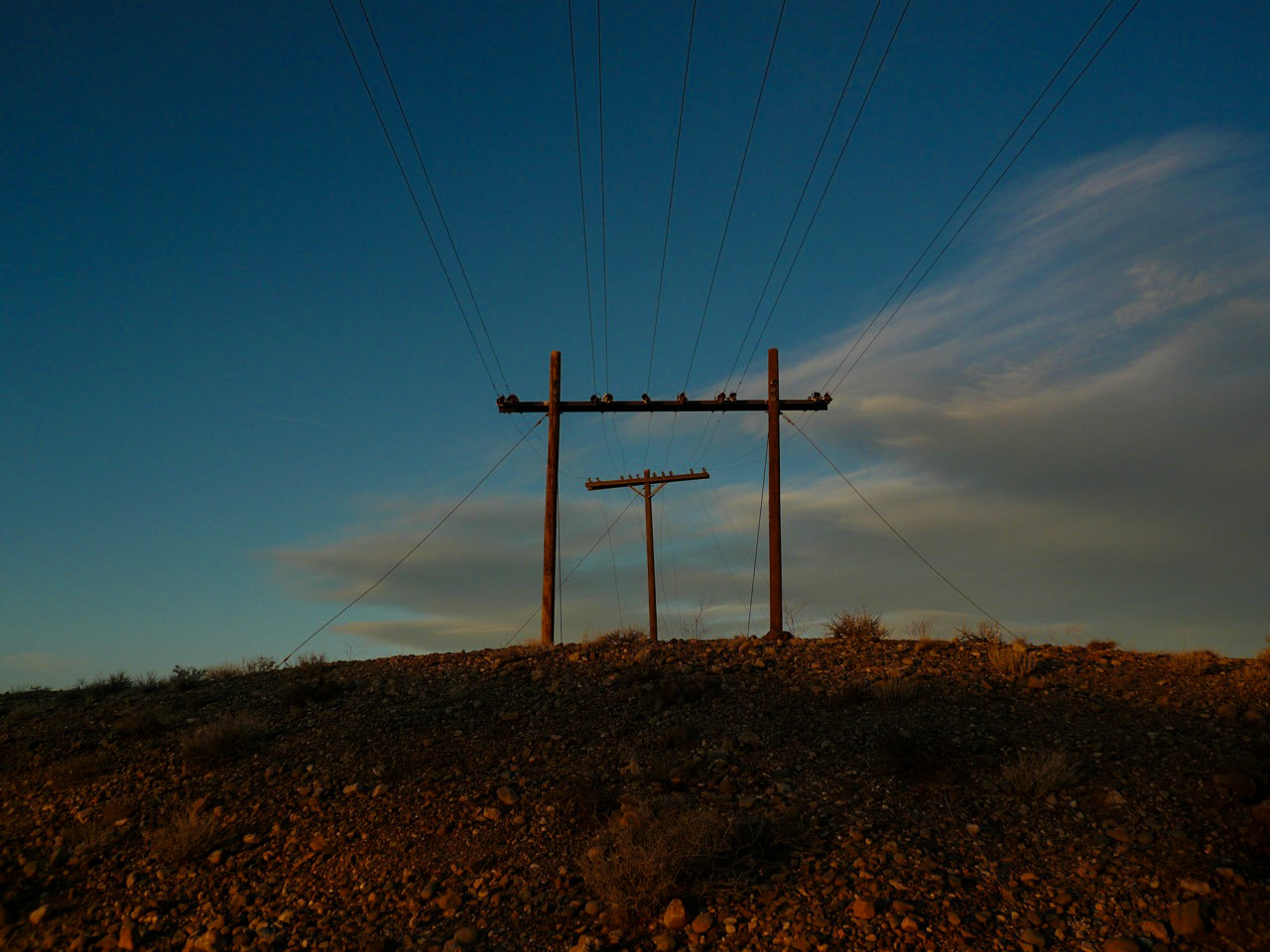Indianz.Com > News > Stateline: Tribes tackle broadband disparities in Indian Country

Native nations with scarce internet are building their own broadband networks
Monday, January 22, 2024
On the Hopi Reservation’s more than 1.5 million acres of desert landscape in northeast Arizona, most residents live in villages atop arid mesas.
Below ground, there’s a network of copper wires that provides telephone and internet service. Hopi Telecommunications in 2004 bought the company that had installed them, but has been struggling ever since to upgrade the network to broadband speeds.
Hopi Telecommunications serves both the Hopi reservation and parts of the surrounding Navajo Nation. To broaden access, the company provided free internet for students during the COVID-19 pandemic and began offering discounted prices for residents through a federal program.
But the copper wires aren’t reaching all the reservation’s residents, nor providing the fastest service, as fiber optic cables would. Hopi Telecommunications received two federal grants — one from the Tribal Broadband Connectivity Program and the other from the Rural Utilities Service — to provide fiber directly to homes. But the project, which began in September, won’t be finished until sometime in 2025.
“It’s very important for us to have the higher bandwidth, and we can’t do that with copper,” said Alicia Youvella, the company’s service order coordinator. “It’s literally like pulling the veins out of the earth and having to relay down new ones.”
Native nations historically have lagged in access to high-speed internet, because of the cost and incomplete broadband coverage data, among other barriers. The inequity became even more apparent during the COVID-19 pandemic, when broadband internet service was a crucial lifeline for people stuck in their homes.
So, some Native nations such as the Hopi are taking the matter into their own hands by building their own networks to provide high-speed internet. They also are tapping into a recent increase in state and federal funding to expand broadband across the country.
“It’s within our mission to be able to be self-sufficient to hopefully grow in a way that we can provide the types of services that are needed out here,” Youvella said. “And we’ve had a boost — in small little steps — but it’s happening.”
Broadband technology, including fiber networks, wireless networks and satellite, allows data to move much more quickly than dial-up internet through copper telephone lines.
In 2020, more than 18% of people living on tribal lands didn’t have access to broadband technology, compared with about 4% of people living in non-tribal areas, according to a report from the U.S. Government Accountability Office. The agency analyzed the data after a previous GAO report found that Federal Communications Commission data was overstating broadband internet access on tribal lands, making it difficult to win additional funding and support.
Some states are trying to help tribal efforts. In 2023, Louisiana, Montana, New Mexico and Oregon enacted laws to support broadband expansion by streamlining funding to local governments, including tribes and underserved communities.
One of the measures in California’s Digital Equity Bill of Rights, a first-of-its-kind bill signed into law by Democratic Gov. Gavin Newsom in October, outlines how the state should ensure that all Californians have equal access to broadband. The new law was pushed by the California Emerging Technology Fund, a nonprofit aimed at closing the state’s digital divide — the widening gap between who can and cannot access digital technology.
But Matthew Rantanen, the director of technology at the Southern California Tribal Chairmen’s Association, says there’s still work to do nationwide. Rantanen, a descendant of the Cree Nation, has worked for two decades with Native communities across the country to secure broadband access.
“As you’re sitting there physically building a network you run into a lot of, ‘Well, how come we can’t get funding for this when everybody else can?’, or ‘Tribes don’t have access to this spectrum because nobody’s using it,’ and so on,” Rantanen said. “And so, you start fighting these policy pieces and figuring out there’s a lot of parts that need to be sorted.”
Rantanen hosts Tribal Broadband Bootcamps to equip tribes to build and maintain wireless networks in their communities.
“You can’t be a part of society if you don’t have access to the resources,” Rantanen said. “[Internet is] hand-in-hand now with water and a roof over your head and electricity to be able to be a citizen in this day and age.”
Building their own networks
FCC data overstates tribal access to broadband service, which limits the federal government’s and tribal leaders’ ability to best provide support, according to the Government Accountability Office report.
BroadbandNow, a data collection and research entity, estimates that 42 million Americans do not have access to broadband internet.
“It’s not just in Indian Country, but it’s, in fact, across the entire United States,” said Frank Martinez, the vice president of strategic initiatives at Connected Nation.
For over 20 years, Connected Nation, a national nonprofit, has worked with federal, state, local and tribal agencies to help close that digital divide. Martinez, who grew up on the Navajo Nation’s reservation spanning parts of Arizona, New Mexico and Utah, said there is no one-size-fits-all solution for Native nations that vary in size, topography and culture.
“There’s a lot of similarities, but there’s a lot of differences,” Martinez said. “I think that trying to prescribe solutions in broadband to meet a whole broad type of those cultures and nations can be very complicated.”
From the Coeur d’Alene Tribe in Idaho to the St. Regis Mohawk Tribe in New York, some Native nations are successfully developing their own infrastructure for better internet, as detailed in a 2021 report from the Institute for Local Self-Reliance, a national nonprofit that works to “build local power to fight corporate control.”
In South Dakota, the Rosebud Sioux Tribe recently received a more than $40 million grant for the installation of a fiber and LTE network that will connect 1,526 unserved Native American households. South Dakota state Sen. Shawn Bordeaux, a Democrat and member of the tribe, told Stateline the new network will prevent the region’s current provider, which has a monopoly, from dictating the price and quality of services for everyone in the area.
Paying for a network and offering affordable prices for residents have been perennial challenges for tribes, said Joe Valandra, the chair and CEO of Tribal Ready. Tribal Ready, a Native-owned and -governed company, helps tribes secure access to broadband funding and resources.
Internet providers that serve Native nations, despite receiving federal and state grants, have not always put that money into tribes in rural areas, Valandra said.
“Tribes have realized that unless they take this bull by the horns and find a way to do it themselves — or find credible partners that can help them do it right — it’s not going to happen,” Valandra said. “Giving money to the incumbent provider hasn’t worked before, and there’s no faith that it’ll work now.”
Tribal Ready helps Native nations identify funding and programs that will let them set up a network completely under the control of the tribe, if possible. The goal, Valandra said, is to empower tribes to regulate broadband as they do other public utilities.
“I think we’ll see over the next decade or so more tribes standing up their own utility authority to encompass this because it’s a benefit for their communities,” he said.
Money and staffing challenges
Up until recently, broadband providers and tribal leaders were mainly focused on building broadband networks, said H Trostle, senior policy analyst at the Center for Indian Country Development at the Federal Reserve Bank of Minneapolis. Now the conversation has shifted to how to sustain those networks over the long term.
Trostle praised the FCC’s Affordable Connectivity Program, which subsidizes broadband service for low-income families. The subsidy, which is as much as $75 per month for households on qualifying Native lands, shows up as a credit on the family’s monthly internet bill.
But the FCC said on January 8 that if Congress does not provide more funding for the program soon, the agency will begin winding it down and millions of households will lose the benefit.
In a bid for more customers, some Native broadband companies are extending service beyond tribal lands, Trostle said.
“But one of the growing challenges is those operating and maintenance costs that just never go away,” Trostle said. “And that’s especially difficult for wireless networks because they have low capital costs, but very high operations costs. So, it’s a very difficult policy point.”
Even with a Native broadband network in place, finding workers can be a challenge. One problem is a shortage of housing. And Youvella, of Hopi Telecommunications, said her company trains nearly every technician who comes on board because few reservation residents have the requisite education.
“These are our struggles, but again, we always somehow break through and we work through it,” Youvella said.
This story originally appeared on Stateline. It is published under a Creative Commons license (CC BY-NC-ND 4.0).
Stateline is part of States Newsroom, a nonprofit news network supported by grants and a coalition of donors as a 501c(3) public charity. Stateline maintains editorial independence. Contact Editor Scott S. Greenberger for questions: info@stateline.org. Follow Stateline on Facebook and Twitter.
Search
Filed Under
Tags
More Headlines
AUDIO: Native American Education – Examining Federal Programs at the U.S. Department of Education
VIDEO: Native American Education – Examining Federal Programs at the U.S. Department of Education
Native America Calling: Indigenous business and the unpredictable new trade landscape
Written testimony for Senate Committee on Indian Affairs hearing on Department of Education
Native America Calling: An imbalance of deadly force by police in Canada
‘Betrayal’: Indian Country slams closure of Department of Education
Witness list for House subcommittee field hearing on Indian self-determination
Senate Committee on Indian Affairs schedules hearing on Department of Education
Cronkite News: Community pays tribute to Congressman Raúl Grijalva
Press Release: Sen. Gallego (D-Arizona) protests firings at Department of Veterans Affairs
Native America Calling: The righteous rebellion of Indigenous punk rock
NAFOA: 5 Things You Need to Know this Week (March 31, 2025)
Chuck Hoskin: Cherokee Nation celebrates Cherokee women
Native America Calling: Tribal rights, a new restaurant and more are on The Menu
Native America Calling: Tribes vie for better access to traditional plants
More Headlines
VIDEO: Native American Education – Examining Federal Programs at the U.S. Department of Education
Native America Calling: Indigenous business and the unpredictable new trade landscape
Written testimony for Senate Committee on Indian Affairs hearing on Department of Education
Native America Calling: An imbalance of deadly force by police in Canada
‘Betrayal’: Indian Country slams closure of Department of Education
Witness list for House subcommittee field hearing on Indian self-determination
Senate Committee on Indian Affairs schedules hearing on Department of Education
Cronkite News: Community pays tribute to Congressman Raúl Grijalva
Press Release: Sen. Gallego (D-Arizona) protests firings at Department of Veterans Affairs
Native America Calling: The righteous rebellion of Indigenous punk rock
NAFOA: 5 Things You Need to Know this Week (March 31, 2025)
Chuck Hoskin: Cherokee Nation celebrates Cherokee women
Native America Calling: Tribal rights, a new restaurant and more are on The Menu
Native America Calling: Tribes vie for better access to traditional plants
More Headlines
